Growing Asplenium
prionitis indoors
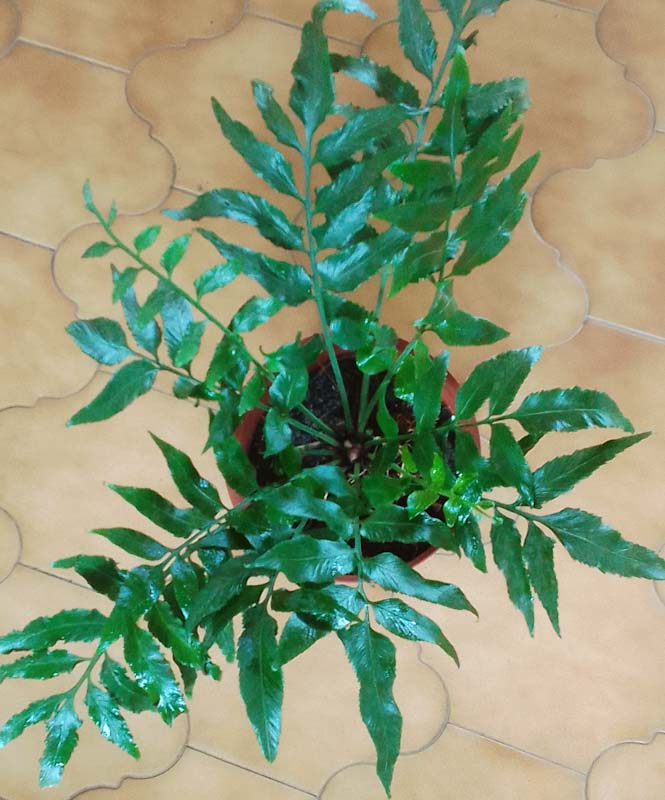
Asplenium is a genus of about 700
species of ferns, often treated as the only genus in the family
Aspleniaceae
The specie name prionitis means
like a saw, this fern has toothed pinna margins.
Habitat
Asplenium prionitisis to be found growing on the ground on boulders or dead logs on the forest floor along streams or river courses, in deep shade in wet coastal forests.
Distribution in South Africa
Eastern Cape and KwaZulu-Natal
Distribution worldwide
Africa, Madagascar, Comoro and Mascarene Islands.
Cultivation
I have established that Asplenium prionitis makes a great very easy to grow houseplant, growing well indoors under relatively high light conditions but they do not tolerate full sun conditions for long without burning.
My plants originate for a small plant that I collected in the forest on the eastern side of the Wentworth hospital in Durban about 40 years ago.
Asplenium prionitis appear to grow in any well drained growing medium that has a high organic component. My plants are presently growing well in a mixture of coco fiber chips with a little added charcoal.
Watering
I water heavily about once per week to flush out the growing medium and mist daily using an insecticide sprayer.
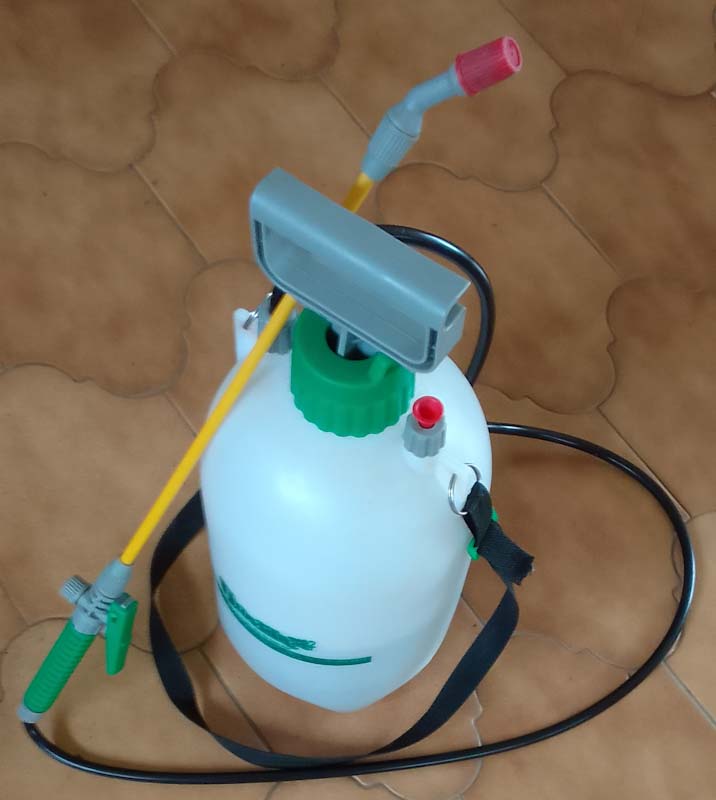
Fertilizing
I feed frequently using a very dilute amount of a variety of plant feeds such as
EasyGro™ Flower and Fruit
is a 3:1:6(46) water soluble fertilizer, high in concentrations of Potassium ideally suitable for crops during the flowering and fruiting stages.
SEAGRO™ Bio-Fertiliser
Bionutrient with Enhanced Amino Acids. A fish emulsion rich in micro & macro elements and 17 amino acids. Seagro is used as organic fertilizer in agricultural practices for maintenance of crop health. Seagro has a remarkable impact on crop quality as well as yield through the activation of key metabolic processes. Seagro serves not only as a nutrition and stress reliever, but also plays an important role in the vitality of the microbial population in the soil.
Nitrosol Original Biological Fertiliser
is the original formulation developed by Dr. Peter Kauzal, a veterinary surgeon, from ruminant blood and bone. Nitrosol Original has a balanced NPK of 11.5.7 plus trace elements and minerals and recommended for use in all horticultural crops and home garden.
Fulvic acid.
Fulvic acid is group of chemicals formed when plants and animals break down. It is found in the humus (organic matter) part of soil and peat, and is also found in streams and lakes.
Fulvic acid benefits of increases root respiration and formation,enhance plant growth and yield. Humic fulvic acid can enhances pH buffering capacity, enhances photosynthesis and respiration, increases cationic exchange.
Brings about an improvement in the transport of nutrients, making them available in the areas of need. Increases the synthesis of proteins and nucleic acids, which will facilitate the action of enzymes formed with some amino acids and micro-nutrients.
Tea
I also feed and mist regularly with a week solution of both black tea and rooibos tea which appears to be very beneficial to both my ferns as well as my orchid plants.
Propagation
Asplenium prionitis propagates very easily from spores if one has the patience to wait a few years for a good sized mature plant, the plus factor is that one can easily propagate large numbers of new plants.
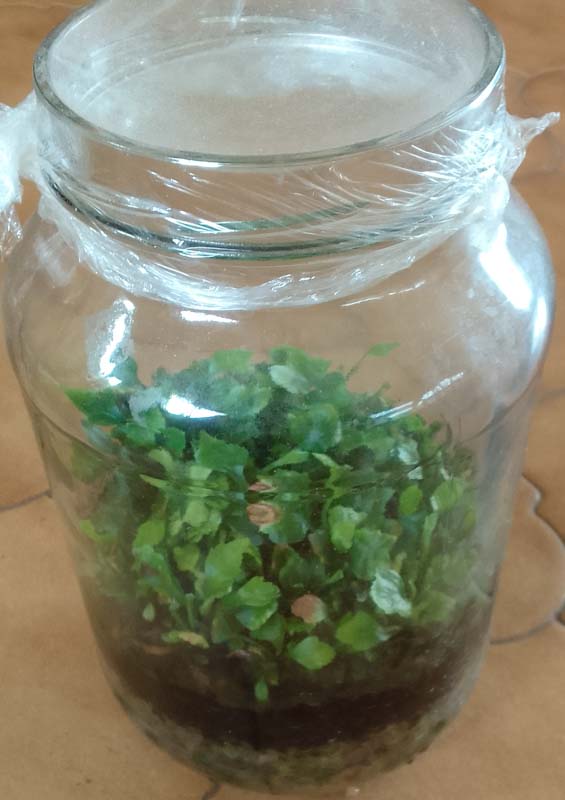
The method that I use is to obtain a large glass jar into which a place a layer of small crushed stone topped with a thin layer of silica sand used for swimming pool filters. Over this layer I place a thin layer of peat or coco peat that is salt free onto which I sprinkle the ripe spore.
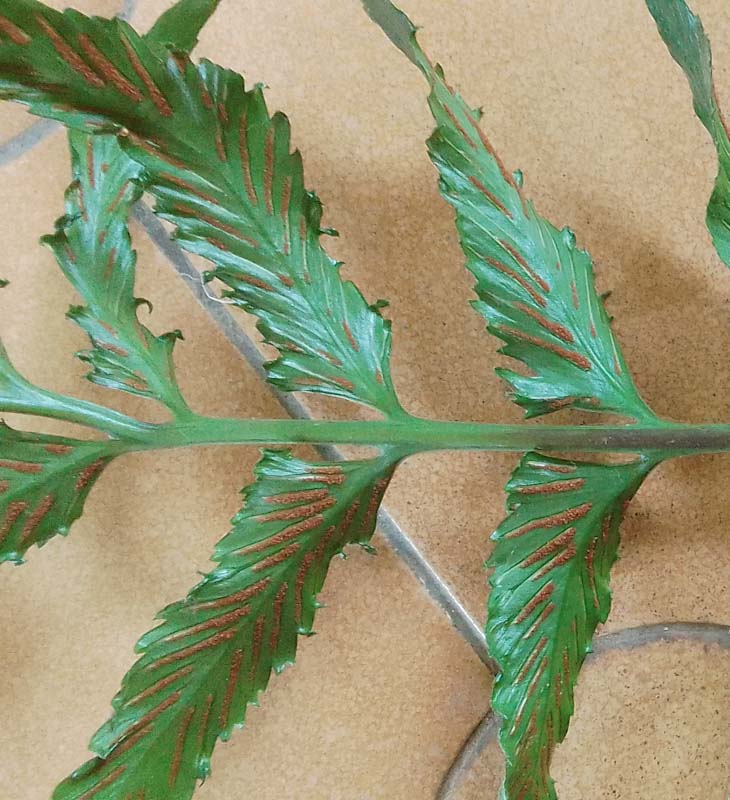
To water I use a small insecticide spray bottle watering enough that
the water creates a small reservoir of water approximately half way up
the crushed stone. I then cover the jar with a piece of cling wrap that
can be fastened by an elastic band of piece of string and place the jar
in an area of bright light that does not receive any direct sunlight or
under lights giving around 5,000 lux for between 12 -14 hours per day.
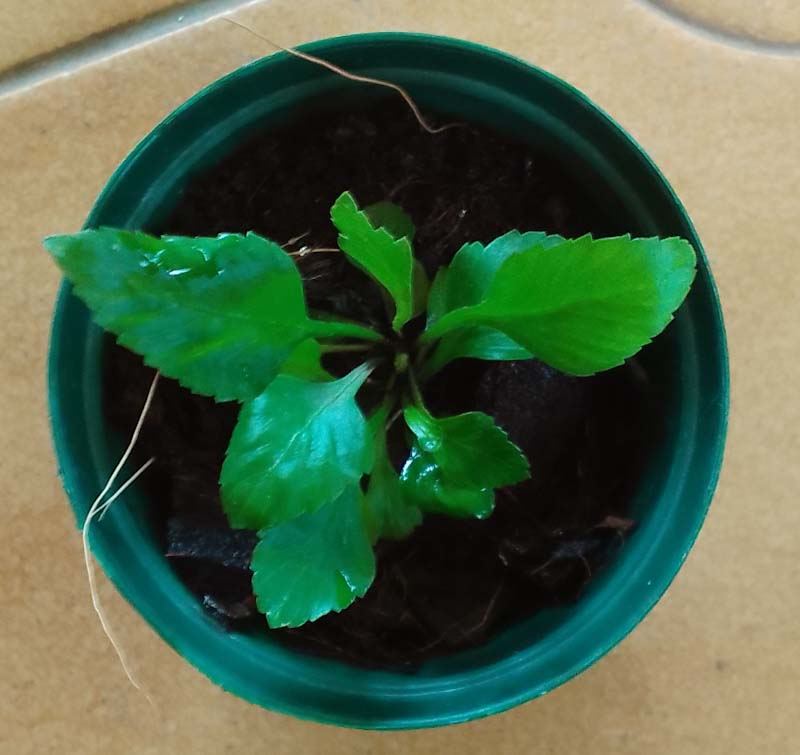
When the young Asplenium prionitis ferns are large enough they are planted out into very small pots in chunks of coco fibre and placed in a humid cool place away from direct sunlight.
Habitat
Asplenium prionitisis to be found growing on the ground on boulders or dead logs on the forest floor along streams or river courses, in deep shade in wet coastal forests.
Distribution in South Africa
Eastern Cape and KwaZulu-Natal
Distribution worldwide
Africa, Madagascar, Comoro and Mascarene Islands.
Cultivation
I have established that Asplenium prionitis makes a great very easy to grow houseplant, growing well indoors under relatively high light conditions but they do not tolerate full sun conditions for long without burning.
My plants originate for a small plant that I collected in the forest on the eastern side of the Wentworth hospital in Durban about 40 years ago.
Asplenium prionitis appear to grow in any well drained growing medium that has a high organic component. My plants are presently growing well in a mixture of coco fiber chips with a little added charcoal.
Watering
I water heavily about once per week to flush out the growing medium and mist daily using an insecticide sprayer.

Fertilizing
I feed frequently using a very dilute amount of a variety of plant feeds such as
EasyGro™ Flower and Fruit
is a 3:1:6(46) water soluble fertilizer, high in concentrations of Potassium ideally suitable for crops during the flowering and fruiting stages.
SEAGRO™ Bio-Fertiliser
Bionutrient with Enhanced Amino Acids. A fish emulsion rich in micro & macro elements and 17 amino acids. Seagro is used as organic fertilizer in agricultural practices for maintenance of crop health. Seagro has a remarkable impact on crop quality as well as yield through the activation of key metabolic processes. Seagro serves not only as a nutrition and stress reliever, but also plays an important role in the vitality of the microbial population in the soil.
Nitrosol Original Biological Fertiliser
is the original formulation developed by Dr. Peter Kauzal, a veterinary surgeon, from ruminant blood and bone. Nitrosol Original has a balanced NPK of 11.5.7 plus trace elements and minerals and recommended for use in all horticultural crops and home garden.
Fulvic acid.
Fulvic acid is group of chemicals formed when plants and animals break down. It is found in the humus (organic matter) part of soil and peat, and is also found in streams and lakes.
Fulvic acid benefits of increases root respiration and formation,enhance plant growth and yield. Humic fulvic acid can enhances pH buffering capacity, enhances photosynthesis and respiration, increases cationic exchange.
Brings about an improvement in the transport of nutrients, making them available in the areas of need. Increases the synthesis of proteins and nucleic acids, which will facilitate the action of enzymes formed with some amino acids and micro-nutrients.
Tea
I also feed and mist regularly with a week solution of both black tea and rooibos tea which appears to be very beneficial to both my ferns as well as my orchid plants.
Propagation
Asplenium prionitis propagates very easily from spores if one has the patience to wait a few years for a good sized mature plant, the plus factor is that one can easily propagate large numbers of new plants.

The method that I use is to obtain a large glass jar into which a place a layer of small crushed stone topped with a thin layer of silica sand used for swimming pool filters. Over this layer I place a thin layer of peat or coco peat that is salt free onto which I sprinkle the ripe spore.


When the young Asplenium prionitis ferns are large enough they are planted out into very small pots in chunks of coco fibre and placed in a humid cool place away from direct sunlight.
Pest control
To date I have not encountered
pests on my plants however I treat them on a regular basis As I do with
my other indoor plants as a precaution because other Asplenium species
that I grow are prone to soft scale and mealie bug attack. In the past
I sprayed my plants which entailed the use of spray overalls, googles
and respirator which was a major task and was both hazardous to my
health as well as made the entire house stink for a day or two.
Furthermore, this process needed to be repeated on a regular basis. I
now use a granular Insecticide with great success and no fuss at all.
The product that I use is, Efekto
Granules Plus active ingredient Imidacloprid (chloro-nicotinyl)
which I apply to the roots and is taken up by the roots and evenly
distributed to the entire plant which is highly effective against most
sucking insects and provides long term control between 4 – 8 weeks.
Efekto Granules Plus is a Neonicotinoid a class of neuro-active
insecticides chemically similar to nicotine compared to organophosphate
and carbamate insecticides, neonicotinoids are less toxic to birds and
mammals, and therefore very safe to use within the home environment.
However, Neonicotinoid has a very bad name for very good reasons for widespread agricultural use, for reasons that do not apply at all for very limited indoor use, in fact it is an ideal insecticide for indoor application due to its low toxicity for humans and its very targeted use in comparison to sprayed insecticides.. Neonicotinoids have been studied in relation to adverse ecological effects, including honey-bee colony collapse disorder (CCD), and declining populations of insect-eating birds. In 2013, the European Union and some neighbouring countries restricted the use of certain neonicotinoids. In 2018 the EU banned the three main neonicotinoids (clothianidin, imidacloprid and thiamethoxam) for all outdoor uses, but in 2020, France re-allowed the use of neonicotinoids on sugar beet crops. Several US states have restricted neonicotinoids out of concern for pollinators and bees.
However, Neonicotinoid has a very bad name for very good reasons for widespread agricultural use, for reasons that do not apply at all for very limited indoor use, in fact it is an ideal insecticide for indoor application due to its low toxicity for humans and its very targeted use in comparison to sprayed insecticides.. Neonicotinoids have been studied in relation to adverse ecological effects, including honey-bee colony collapse disorder (CCD), and declining populations of insect-eating birds. In 2013, the European Union and some neighbouring countries restricted the use of certain neonicotinoids. In 2018 the EU banned the three main neonicotinoids (clothianidin, imidacloprid and thiamethoxam) for all outdoor uses, but in 2020, France re-allowed the use of neonicotinoids on sugar beet crops. Several US states have restricted neonicotinoids out of concern for pollinators and bees.
| Home |
Contact | |
| Green Roof |
Rehabilitation |
|
| Landscaping |
Weed |
|
 |
 |